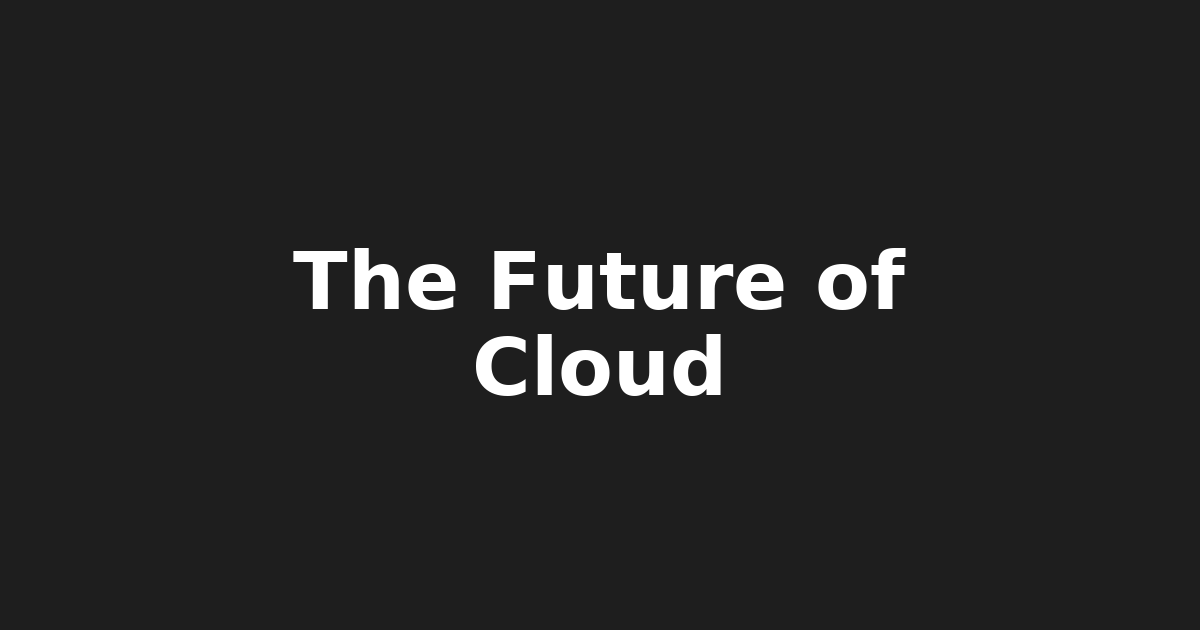Embracing Serverless Computing: The Future of Cloud Development

Serverless Computing: The Future of Cloud Computing
=====================================================
Serverless computing, also known as function-as-a-service (FaaS), has gained significant traction in recent years due to its numerous benefits. In this article, we will explore the current trends and technologies surrounding serverless computing, including its cost-effectiveness, scalability, reduced administrative burdens, and popular serverless platforms.
Benefits of Serverless Computing
Serverless computing offers several benefits, including:
- Cost-effectiveness: Serverless providers only charge for the compute resources used, eliminating the need for upfront infrastructure costs. [1]
- Scalability: Serverless functions can be scaled up or down dynamically, ensuring that resources are allocated efficiently.
- Reduced administrative burdens: Developers don't need to manage servers, patches, or upgrades, freeing up time for more strategic tasks.
Popular Serverless Platforms
Some popular serverless platforms include:
- AWS Lambda: Amazon Web Services (AWS) offers a managed service that allows developers to run code in response to events.
- Azure Functions: Microsoft's Azure Functions is a cloud-based platform for building event-driven applications.
- Google Cloud Functions (GCF): Google Cloud's GCF is a serverless platform that enables developers to build and deploy functions without worrying about the underlying infrastructure.
- IBM Cloud Functions: IBM's Cloud Functions is a managed service that allows developers to run code in response to events.
Trend Towards Serverless Computing
The trend towards serverless computing is driven by the growing demand for faster and more agile application development, as well as the need to optimize resource utilization in cloud environments. [2]
For developers, Linux users, system administrators, and IT professionals, serverless computing offers numerous opportunities for:
- Building scalable, event-driven applications
- Integrating with microservices architectures
- Enhancing security and compliance
- Simplifying application deployment and management
Resources for Learning More
To stay up-to-date with the latest developments in serverless computing, you can follow industry leaders, attend webinars and conferences, or participate in online communities focused on cloud computing and DevOps.
Some popular resources for learning more about serverless computing include:
- AWS Lambda documentation: The official documentation for AWS Lambda provides detailed information on how to get started with the service.
- Azure Functions tutorial: Microsoft's Azure Functions tutorial covers the basics of building event-driven applications using the platform.
- Google Cloud Functions (GCF) tutorials: Google's GCF tutorials provide a comprehensive introduction to the serverless platform.
- Serverless Compute Forum: The Serverless Compute Forum is an online community for discussing cloud computing and DevOps topics.
Conclusion
Serverless computing offers numerous benefits, including cost-effectiveness, scalability, and reduced administrative burdens. Popular serverless platforms include AWS Lambda, Azure Functions, Google Cloud Functions (GCF), and IBM Cloud Functions. By staying up-to-date with the latest developments in serverless computing, developers can build faster, more scalable, and more efficient applications for their customers.
References
[1] AWS. (2025). AWS Lambda Pricing
[2] Gartner. (2025). Serverless Computing: A New Way of Thinking About Cloud Infrastructure
